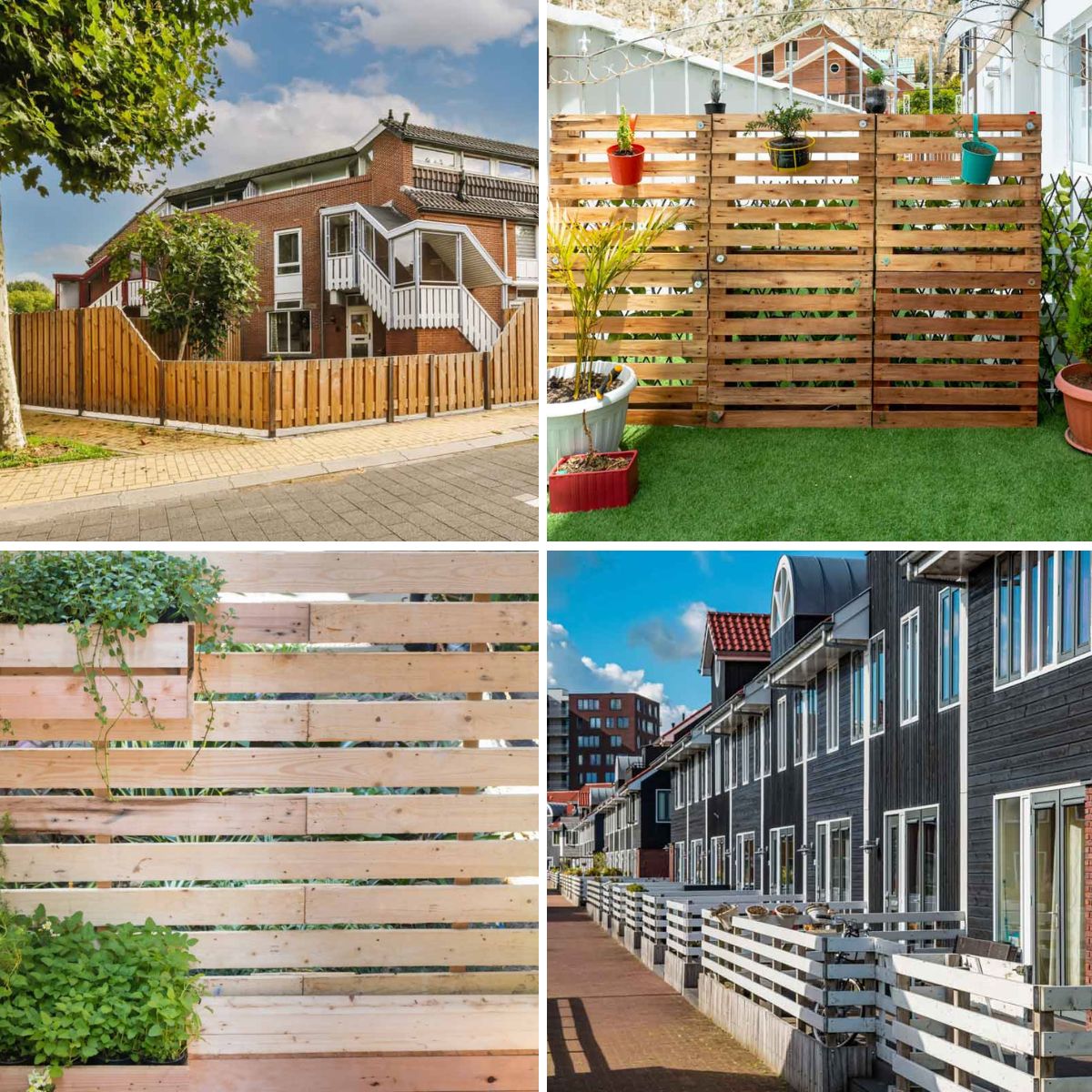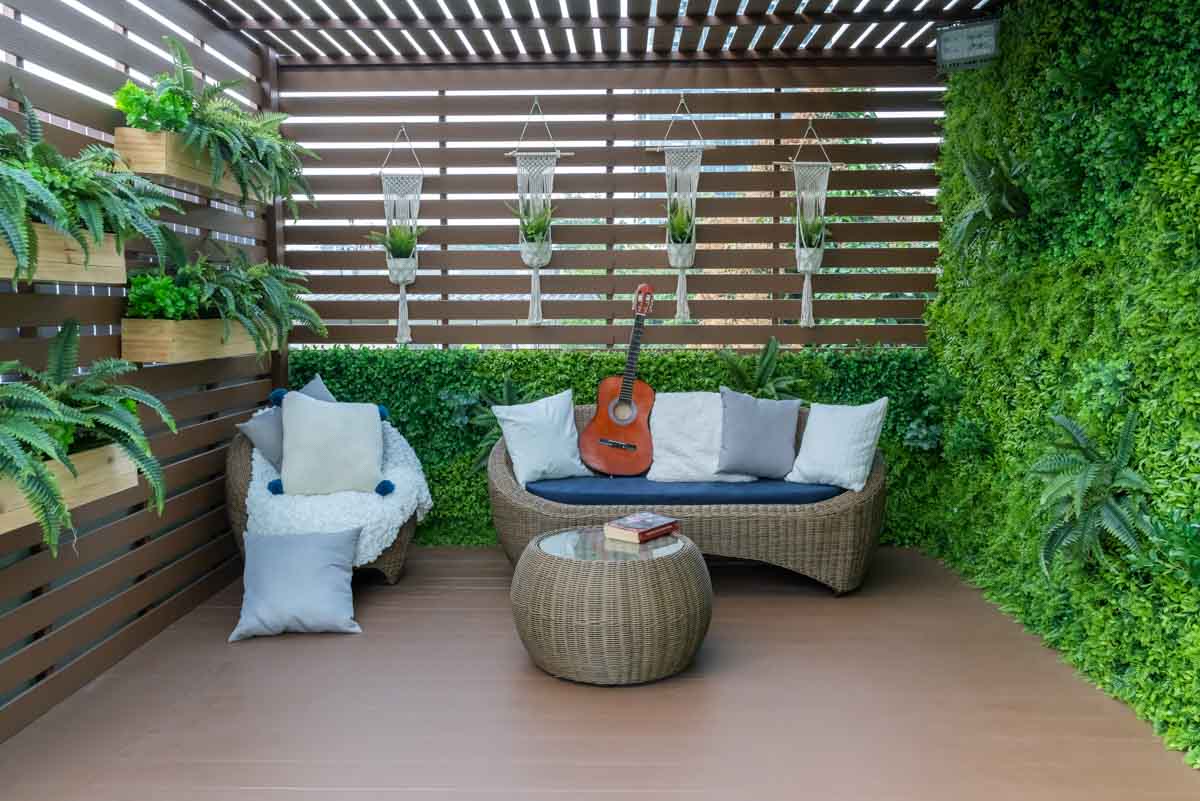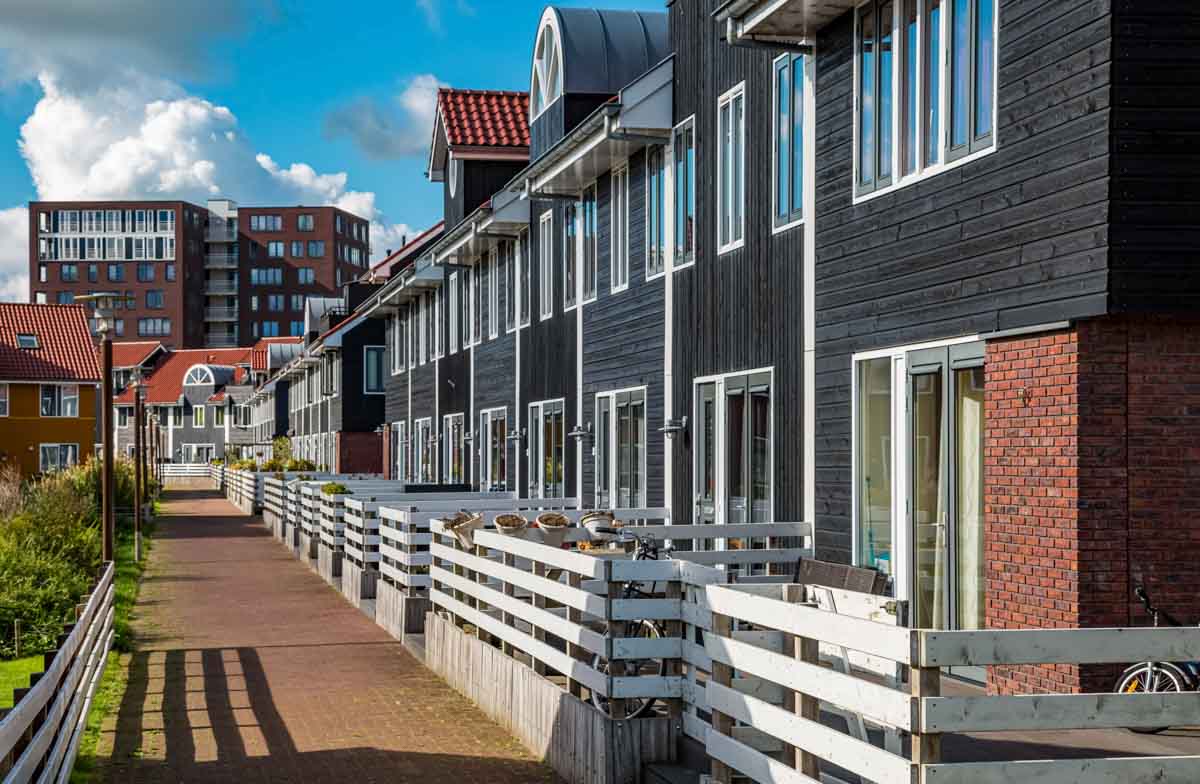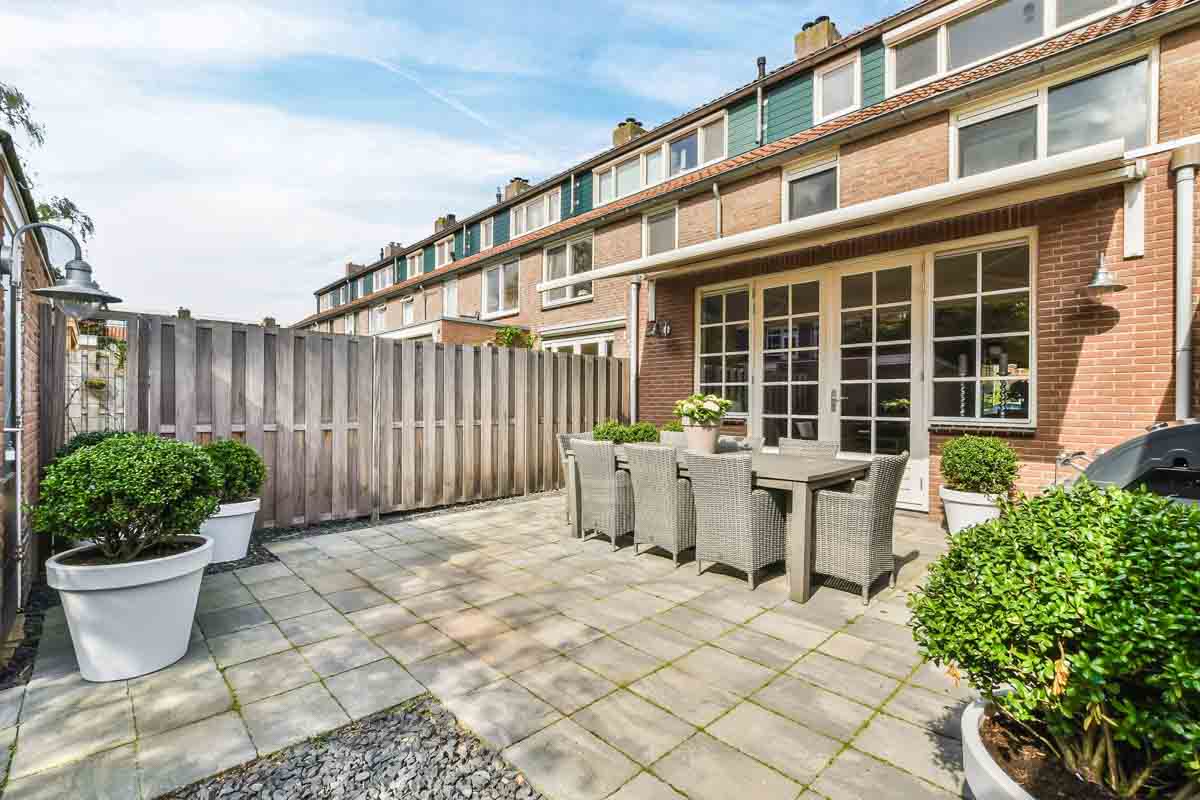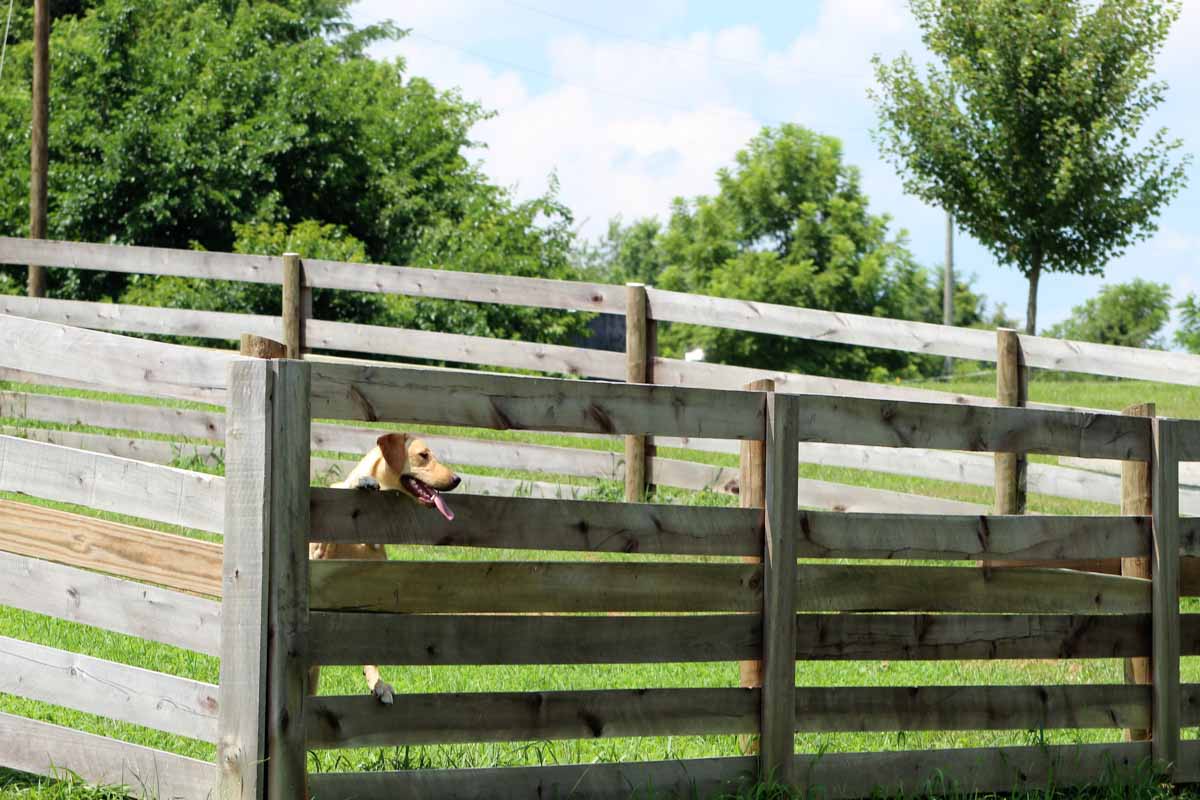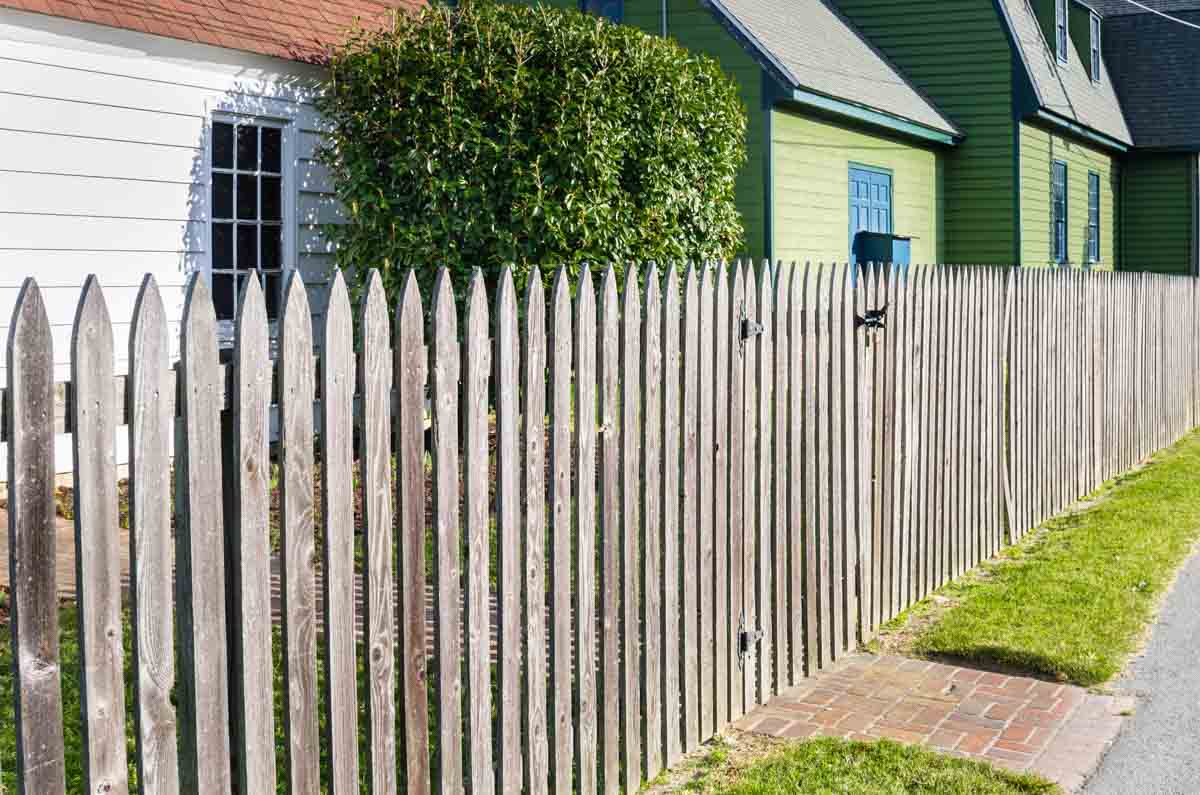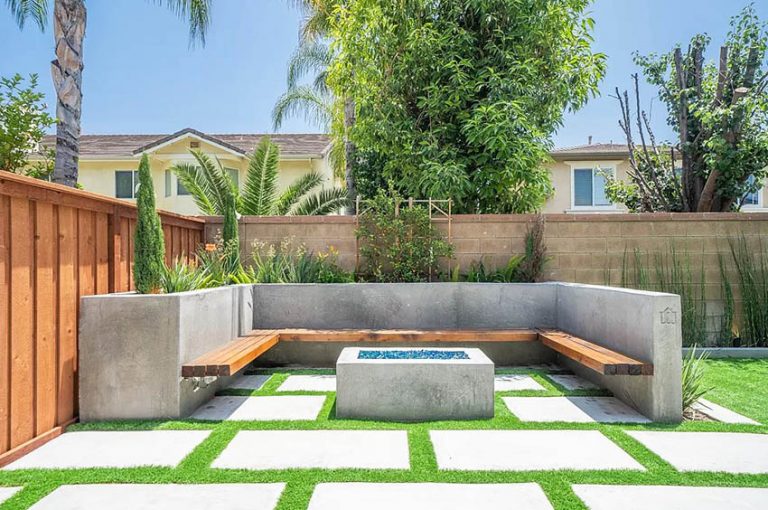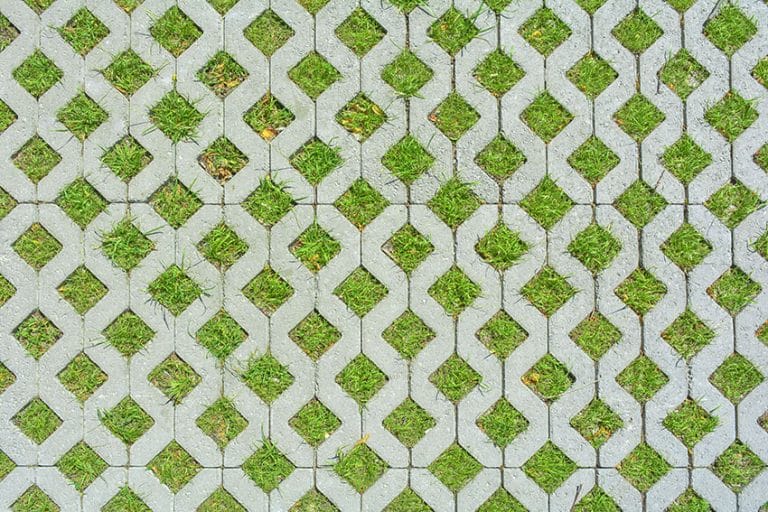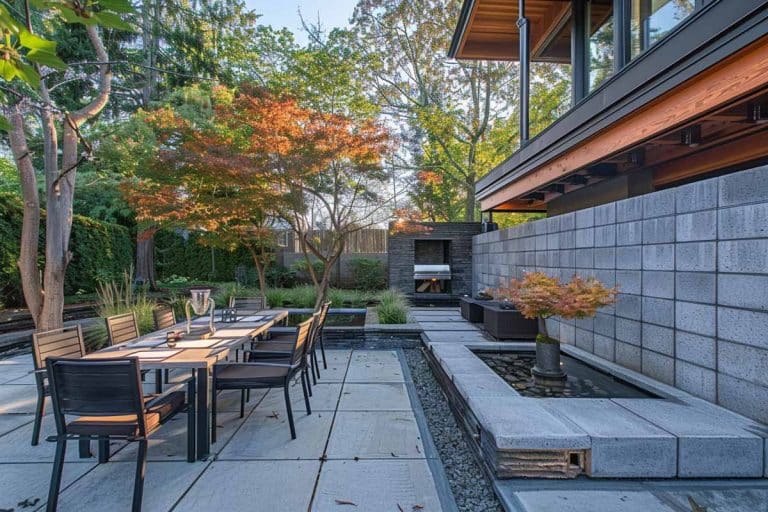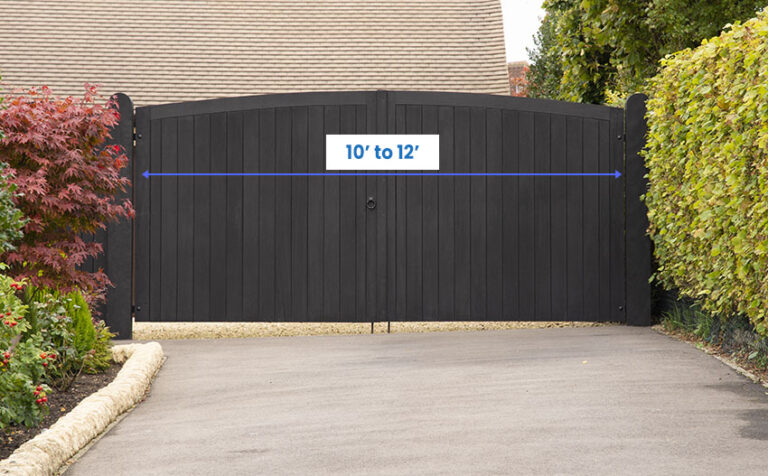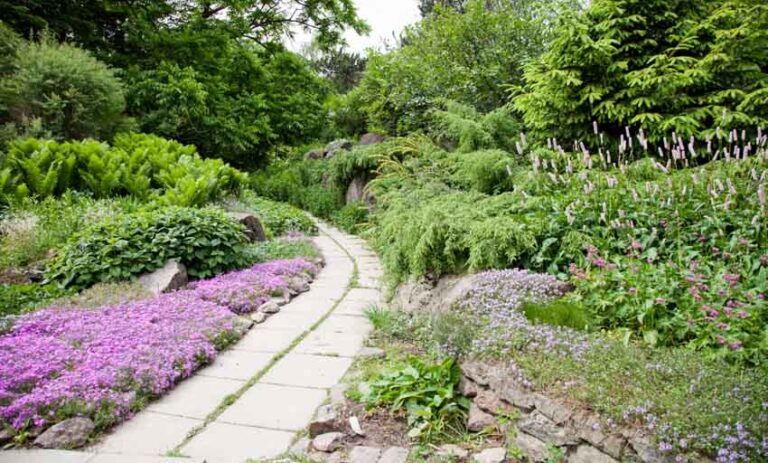Pallet Fence Ideas: Different Designs & Building Steps
A DIY-friendly fencing solution, pallet fences are perfect for homeowners who want an enclosure for their pets or to install a perimeter fence that’s durable and affordable. These fences are not just popular for perimeter fencing, but you’ll see creative designs made for bistro cafes and pool deck privacy enclosures.
What Is Pallet Fencing?
A pallet fence is made from a wooden platform used in storing and transporting activities, for instance, lifting bulk products using a forklift. This is the reason why the wooden units are assembled in such a way that the forklift’s fork is able to slide through beneath the platform.
PVC platforms are also available, but wooden platforms are easier to customize for various DIY projects and are cheaper and readily available.
The standard pallet size set by ISO together with the Consumer Brands Association is 48 x 40 inches with a thickness of 5/16 inches, with each plank having 3.4-inch-wide boards. Customized sizes are available, but almost 1/3 of all pallets in North America use this standard.
Other industries have assigned pallet sizes:
• Military Applications: 35 x 45.5 inches
• Chemical Industries: 48 x 48 inches
• Beverage Storage and Shipping: 36 x 36 inches
• Automotive Industries: 48 x 45 inches
• Dairy: 40 x 40 inches
• Drums: 48 x 48 inches
• Retail and Others: 48 x 20 inches
Because the preassembled wood platforms are widely used, homeowners who need a quick install with room for customized design can easily source out used materials.
Homeowners can get free used pallets from stores such as hardware, grocery, construction, furniture, or equipment shops. Check online sites like Craigslist, Facebook marketplace and Nextdoor for more freebies.
Pallets make a sturdy fence as the platform is made to carry heavy loads of stacked products. To protect it from the elements, apply a sealer or wood sealer that will protect it from rain and sun exposure. Before applying sealants, they can be sprayed with biocidal cleaner to remove viruses and bacteria.
Two general types of pallets can be used for fence designs, namely, the two-way and the four-way. The major difference is that the two-way pallet can be lifted on two opposite sides while the four-way can be lifted on all four sides. Four-way models are usually heavier and larger.
However, the typical weight ranges from 30 to 48 pounds. This feature of the wood pallet should be considered when building these fences. However, these materials are lightweight compared to other types of fencing designs, such as metal or concrete blocks.
Aside from two-way and four-way styles, there are many types of pallet options. The most common are:
• Stringer Pallets
• Closed Board
• Open Board
• Block
• Double Face
• Double Wing
• Wing Type
• Reversible Pallets
Here share the different fence designs that use this wood.
Modern DIY Fence Made From Pallets
There are many ways to achieve a more modern look for a pallet fence. A modern fence would have a simple top cap, such as leaving it with a clean, natural wood finish or painting it in a sleek, monochromatic color.
If you want it to be more customized, the planks can be removed to create a customized design. Using long planks, lay them horizontally and equally spaced. The repeating horizontal pattern creates a more minimalist look.
No Dig Pallet Style Fence
A practical way to build a pallet fence with minimal disturbance to the ground is by using fence stakes that will support the boards. Drive-in stakes about 4” x 4” stake into each assigned interval, which is usually between the two adjacent pieces.
For a sturdier support, use a 4” x 4” post spike to be fitted with the 4” x 4” wooden stake. A backfill of gravel can be used to further secure the pieces. Aside from a quick installation, a no-dig pallet fence means it is easier to remove when planning for a temporary enclosure.
Pallet Privacy Fence
When building a privacy fence, use closed-boarded pallets for a full privacy enclosure. The typical height of privacy fences is 6 feet (72 inches). Since standard pallets have heights ranging from 40 to 48 inches, you might want to elevate your privacy fence by stacking one unit over another.
Privacy pallet fences are perfect for enclosures for swimming pools, gardens, patios, and any areas that require an ample amount of privacy from neighbors.
Pallet Dog Fence
Securing space for your dog to run around safely means having a sturdy enclosure that won’t easily tip-off and is high enough to prevent your pet from jumping over. A pallet fence is convenient to set up fast and is durable for small to medium dogs.
It is also one of the dog-friendly backyard ideas on a budget for homeowners to consider. With reinforced framing, a pallet fence can work with larger dogs. It is recommended to have a metal stake and framing in addition to the wooden platforms.
Additional mesh wire may be essential to keep dogs from chewing away the wood material. But if your dog is well-trained, it may not be necessary to place the additional wireframing.
Pallet Picket Fence
Since pallets have planks that are readily cut to size, simply remove the upright or vertical planks and leave horizontal and cross planks holding them into place. Another modification that’s quickly done with simple tools is to cut off the top portion of the picket design or pointed triangular-shaped end typical for picket fences.
Use a wooden template to mark each vertical plank on the pallet, then cut out the excess part. Don’t throw away the excess wood; you can still use it for other DIY projects. Simply paint the picket fence white or any other chosen color. These designs are practical for establishing boundaries.
How To Build a Fence Made From Pallets?
Here we share the process on how to build a pallet fence.
Tools & Accessories:
• For Cutting Wood: Circular Saw, Reciprocating Saw, or a Handheld Saw. Jigsaw can also be used and is versatile in cutting irregular shapes if you plan to cut off designs from your pallet.
• Measure Dimensions: Measuring Tape
• For Leveling: Level Bar. A laser level can also be helpful if you’re planning to fence off a wide area. Most laser levels can be used to level vertical, horizontal, and angled lines.
• For Attaching Pallets: Hammer, Nail Gun, or Electric Drill and Screwdriver. Using screws makes the installation faster. You may want to use a battery-operated drill and screwdriver when a power outlet can’t reach the area to be fenced.
• Hold Pallets Together: T-track or Track Clamps. When working alone, track clamps are useful for temporarily holding the pallets together while you drill or nail them together.
• Dig Holes: Post Hole Digger or Shovel. When poles are used to support the pallets, there are manual and electrical versions of post-hole diggers and shovels.
• For Digging a Trench: Trenching Spade. A trenching spade is useful when digging a trench to divert water or break up soil along the structure.
• Remove Nails or Staples: Pliers (Flat or long nose), Staple remover (industrial), Crowbar. Depending on how the planks were held, you’ll need a tool to remove the nails or staples that hold together the planks.
• For Safety: Working gloves, ears, goggles, and other safety equipment.
• For Smoothing Off Edges: Sander/Sanding Paper (60 to 80 grit) medium grit.
Hardware & Materials:
• Wooden Pallets
• Wooden or Metal Posts
• Wood Rails
• Screws or Nails
• Ready-mix Concrete or Gravel
• Paint/Sealant/Varnish or Stain (Optional)
• Biocidal Cleaner (Optional)
• Sanding Paper
• Wood Stakes / Metal Pole
• Mason’s line (Mason’s twine)
• Cinder Blocks
General Steps:
Step 1 – Preparation
• Plan the Design: Determine the area to be enclosed and what design you want for your pallet fence. Gather all of the tools, materials and items you’ll need to complete the style of wood fence you will be building.
• Prepare the Pallets to be Used: Remove the planks not needed for the design. If planning for a picket style fence, remove the vertical frame and leave the plank holding the series of planks together. You can add reinforcement as well by adding a horizontal board across the planks or adding planks in between the spaces if you’re planning for full coverage for the fence.
• Clear the Ground: Clear out the ground or area where you will be placing your fencing. When removing obstacles, you have the option to include clearing away grass, debris, or any other obstacles a few feet from the outermost line of your enclosure to have a clear working space.
Step 2 – Apply Biocidal Remover: A recommended step is to apply biocidal cleaner to remove any viruses or bacteria that may have been picked up by the pallets during use. The biocidal remover can be applied before or after cutting the wood to the required size and design.
Step 3 – Layout the Required Perimeter: Establish the boundaries. Mark the corners of the area to be enclosed by driving in the stakes. If it’s a large area, assign an interval measurement, say every 3 feet, and place a wooden stake.
When using a metal pole as a temporary marker, the metal pole can be driven using a rammer on marked points. Another option is to place the metal as you place the pallet. The metal pole can temporarily hold the units together.
Step 4 – Install the Posts: Either wood or metal posts can be used to hold the wooden pallets in place. The height will depend on the pallet height and the number of rows or layers to be stacked to create the fence. It is recommended to drive the poles at least 36 inches or half the fence’s height.
Step 4 – Place the Cinder Blocks: When planning to place cinder blocks along the perimeter, offset your mason’s wire to accommodate the height of your cinder blocks. Another option is to use the cinder blocks in establishing the boundary instead of using the mason’s wire if fencing out a small area.
Step 5 – Place the Pallets: From the established 90-degree corner, place one of the pallets with the top deck boards facing the inside of the enclosed area. If using cinder blocks as a base, align the frame along the line of cinder blocks.
When an offset from the ground (2 to 3 inches) is required, use a clamp or have another installer hold the pallet in place as you secure the platform against the fence pole. Repeat placing each piece along the perimeter until the entire area is covered. It is recommended to offset wooden pallets off the ground to prevent water from seeping through the material.
Step 6 – Place Gravel or Dig out a Trench: Depending on the area and intended design. A gravel bedding or digging out a trench along the perimeter is recommended to prevent water from settling around the wooden structure.
How to Secure a Pallet Design Fence?
Additional reinforcement can extend the service life of a pallet fence. Here are some instructions and tips to help keep your fence secure in adverse weather.
Add Bracing Either with Wood or Metal: Depending on the height and design of your fence, you might need to add diagonal bracing between posts for extra stability. This is especially important for taller fences to prevent them from swaying.
Install Top Rail and Bottom Rail: When aiming for a cleaner and uniform look, you can add a top rail and bottom rail or place a trim at the top. Fasten the additional components with screws or nails. The added horizontal trim keeps vertical planks from misaligning over time.
Install Rebar Rods at the Base: To prevent the structure from tipping over from wind or any other outside force, install a rebar rod at the base against the pallet deck.
These can be placed at intervals on each side of the pallet fence. To further reinforce the rebars with the wooden pieces, drill in screws or nails through the pallet beside the installed rebar rods, where wire ties can be fastened and tied to the metal rebar.
Use Metal Straps: Screw thin metal straps as a horizontal bracing along the fence. The metal bracing can be installed only on the metal posts. Also, use metal hardware when installing a door treated with red oxide or any other protective coating for metal.
Use Wire Mesh: Adding a sheet of metal wire mesh against one side of the fence stabilizes the pallet fence and can also add a barrier against smaller animals. Chicken wire is the most economical, but there are colored plastic wire mesh that can be paired with rustic wood planks.
Attach Wood Planters: A pallet planter can bring plants and greenery and add stability to your backyard garden fence. They can be a low cost way to improve the aesthetics of the design and enhance the wall strength.
Do you have any experience or tips to share about building a pallet garden fence? Share your thoughts with our readers below. See more related fence styles in our article about the best horizontal fence ideas on this page.

